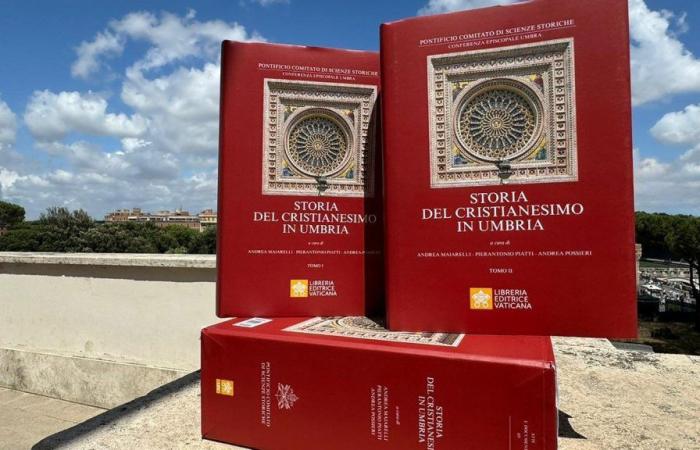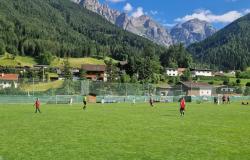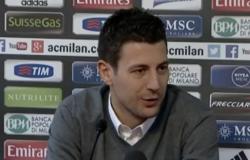In the volume of the Libreria Editrice Vaticana the journey through time to the heart of Italy in the footsteps of the witnesses who rooted the faith there. Andrea Possieri, one of the curators: with Assisi the question of peace becomes in recent times a peculiar characteristic of this territory
Debora Donnini – Vatican City
A land that was the birthplace of some of Italy’s best-known saints: from Saint Francis of Assisi to Saint Clare and Saint Benedict of Norcia. The historical events of the place are the backdrop to the development of the faith investigated in the two volumes that make up the text “History of Christianity in Umbria”.
Several historians, including Andrea Riccardi, under the guidance of the curators, have attempted their essays in this vast work. Andrea Possieri, Andrea Maiarelli and Pierantonio Piatti. A text which also has the patronage of the Pontifical Committee for Historical Sciences and the Episcopal Conference of Umbria.
“The crucial point of this book is that it is a great work that brings together the ecclesiastical, religious and cultural history of a Region with very ancient dioceses. A work designed for a wide audience, not just specialists”, recalls the professor of contemporary history at the University of Perugia, Andrea Possieri, in the interview. It was conceived more than 20 years ago – he says – by Monsignor Giuseppe Chiaretti, then archbishop of Perugia-Città della Pieve. Even though, in reality, it had already been thought of by Catholic intellectuals and had been talked about for about 100 years.
Listen to the interview with Andrea Possieri:
The legacy of Saint Francis
The book reconstructs, in a peculiar way, the history of faith in this area of Italy, rich in woods and small urban centres, showing how the very morphology of the territory and history have intersected with the development of the Christian communities themselves. The emblem of faith in this land is undoubtedly Saint Francis. In October – says Possieri – “we will hold a great conference entitled ‘Thinking Francis, history, memory and political use'”.
“Francis left to Umbria the idea of ’holy poverty’, which is not a sociological or economic question, but an essentially spiritual question. He left a legacy of what was called in the 19th century – in full controversy – an army ‘of thousands of friars’ who evangelized Umbria”, remarks Possieri, recalling how Umbria is “studded with Franciscan places which are places of the spirit , of faith and also of sociality”. Francis of Assisi therefore leaves a religious, cultural, social and artistic presence and precisely in this last area “much of what we have in the Umbrian territory – notes Possieri – is also linked to his presence. Throughout the Region and beyond, we have Franciscan places of true faith and not just places of intellectual tourism.”
The faith of the simple
An important aspect to understand the Christian history in this Region is to see how it is dotted in the countryside with “pievi”, that is, churches and baptismal fonts. Umbria is characterized by having many small urban centres, with city walls, inserted in a complex geographical context because, for example, it is divided in two by the Tiber. Christianity and the Umbrian saints are therefore inserted into this polymorphic fabric through the parish churches. Christian Umbria is, therefore, that of the countryside, of the simple and of popular piety.
The events of the last centuries
In Umbria, however, we must remember the important figure of Gioacchino Pecci – future Pope Leo XIII – who was bishop of Perugia for over 30 years, and standard bearer against freemasonry.
In particular, Possieri focuses on the experience of the First World War which “represents for Catholics the moment in which they reconciled with the idea of their homeland. This is something new that will characterize the history of the Catholic world in Italy from this moment on.” In fact, “the entire Catholic world, for example, creates newspapers, Catholic weeklies are published throughout Umbria which in some way reconcile Benedict XV’s idea of peace with the idea of homeland. Along with this ‘rediscovery of the homeland’, there are constant charitable initiatives. All the bishops launch aid and relief initiatives, for example for orphans. There are some realities, such as the Little Handmaids of the Sacred Heart in Città di Castello, which were born during the First World War”.
Possieri explains that the last 40 years of the history of Christianity in Umbria are not addressed in the book: there is no mention, for example, of the new ecclesial realities that were born after the Council and established themselves in Umbria and which have a very strong presence here. An editorial choice also due to contingent reasons, such as having to close a book produced in about 8 years.
“Today – he explains – Christianity is very different from that described in the book, which however is the starting point. Today’s Christianity is made up of associative realities, of ecclesial movements, parishes, sanctuaries, it is a very complex polymorphic Christianity, very alive, but no longer as central as it could have been 60 years ago”.
Assisi and peace
However, the text underlines the importance of 1986 with the meeting of the Pope and other representatives of religions to pray for peace: Assisi becomes a meeting place. “Peace – explains Possieri – is an unavoidable characteristic of Umbrian Christianity and also influences the relationship with the secular world. There are many examples of conferences and meetings in which the secular world and the religious world find a synthesis in Assisi. And today anyone who refers to Christianity in Assisi is referring to peace.”






